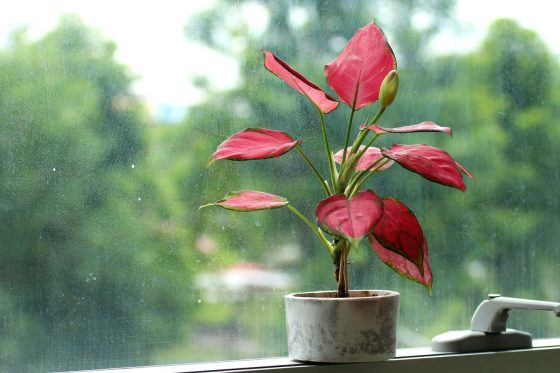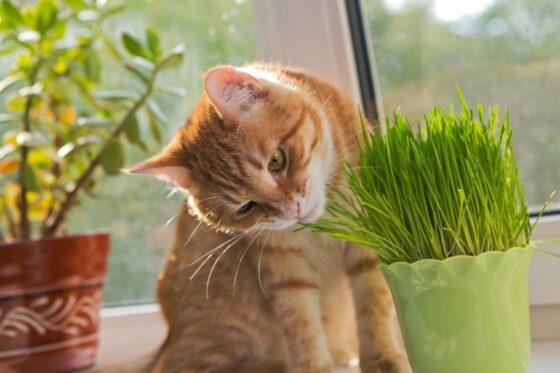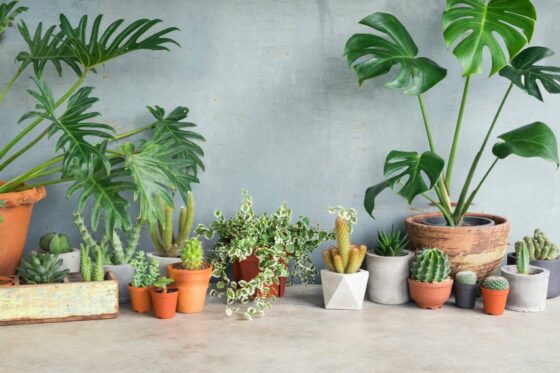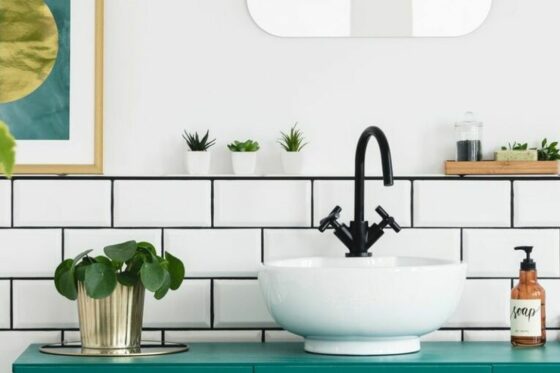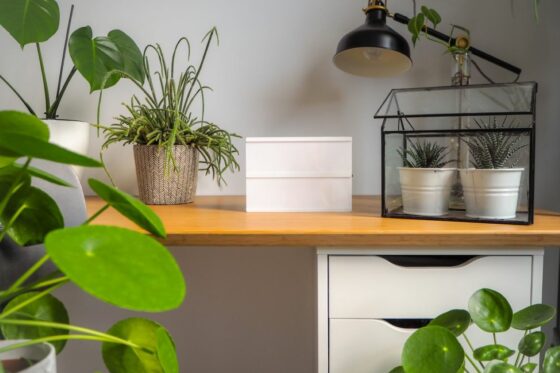Indoor ferns: our favourite indoor fern plants
Most people associate ferns with forest floors, growing in the moist soil beneath the trees. But did you know you can keep many types of ferns in the house? Discover some of the different indoor ferns and how to care for them.
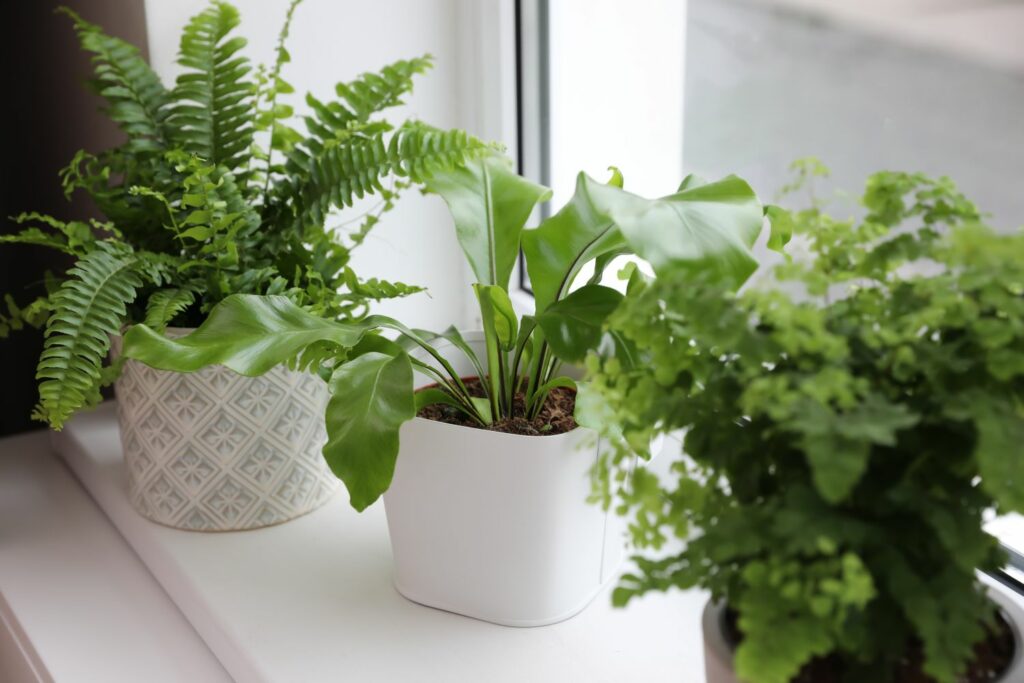
Not all ferns are suitable for growing indoors, so if you want to keep a fern as a houseplant, you first need to choose the right species. Generally, fern species from the tropics are best suited as houseplants. Read on to find out about some of the most beautiful indoor ferns.
Contents
Types of indoor ferns
Ferns are among the oldest plants in the world and can be found almost everywhere. In total, there are about 12,000 fern species. The species that are suitable as indoor plants are usually tropical ferns that require high humidity. The following section focuses on ferns that are suitable as houseplants and what makes each of them so special.
Bird’s nest fern
The tropical bird’s nest fern (Asplenium nidus) has slow-growing, simple, shiny leaves. In nature, it grows epiphytically, that is, perched on trees. As a houseplant, the bird’s nest fern prefers temperatures of around 18 to 25 °C and a partially shady, humid location. It also prefers a substrate with about 50% sand mixed in. Bird’s nest ferns dislike direct sunlight, so choose their location accordingly.
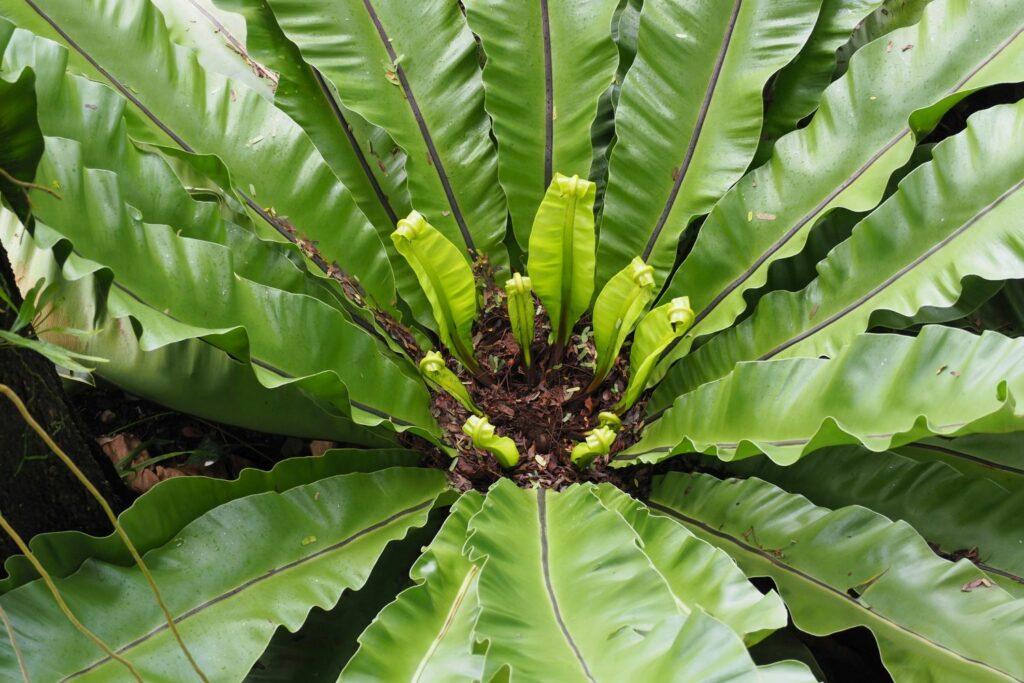
Tip: a close relative of the bird’s nest fern is the Norfolk Island spleenwort (Asplenium dimorphum). It produces metre-long feathery fronds and is very hardy.
Boston fern
The Boston fern (Nephrolepis exaltata) is very hardy and easy to care for. It has pinnate or compound green leaves that grow up to 80cm long. These look wonderful hanging decoratively over the edge of indoor hanging pots. In nature, Boston ferns grow on the ground or perched in trees. Indoors, they need a bright location without direct midday sun and year-round temperatures of 18 to 20 °C. Boston ferns, too, thrive in high humidity, so a spot in a bathroom is perfect. The ideal soil for a Boston fern should retain water well and have a loose structure. These ferns can reach heights of up to 90cm. They come in several varieties with wavy, curly or variegated leaflets.

Popular Boston fern varieties include:
- ‘Teddy Junior’: particularly strong growth
- ‘Marissa’: a dwarf variety
- ‘Whitmannii’: densely curled foliage, sensitive
- ‘Green Lady’: upright to gentle arching fronds, sensitive
Maidenhair fern
A small indoor fern representative is the Southern maidenhair fern (Adiantum capillus-veneris), which is also known as the venus hair fern. The shoots are thin, dark brown, shiny, and hair-like, hence their name. From rounded to fan-shaped, the delicate leaflets adorn the equally dainty shoots. In the home, maidenhair ferns require a semi-shaded location with temperatures of 20 to 25 °C in summer. In winter, temperatures should be around 18 °C. High humidity and well-drained, slightly acidic soil are essential for healthy growth. In good conditions, maidenhair fern fronds can reach up to 60cm long.

Tip: there are various species and varieties of the genus Adiantum that are kept as indoor ferns. Adiantum reniforme, for example, has coin-sized leaves shaped like lily pads. Adiantum raddianumis is another amazing variety with triangular fronds and bushy growth.
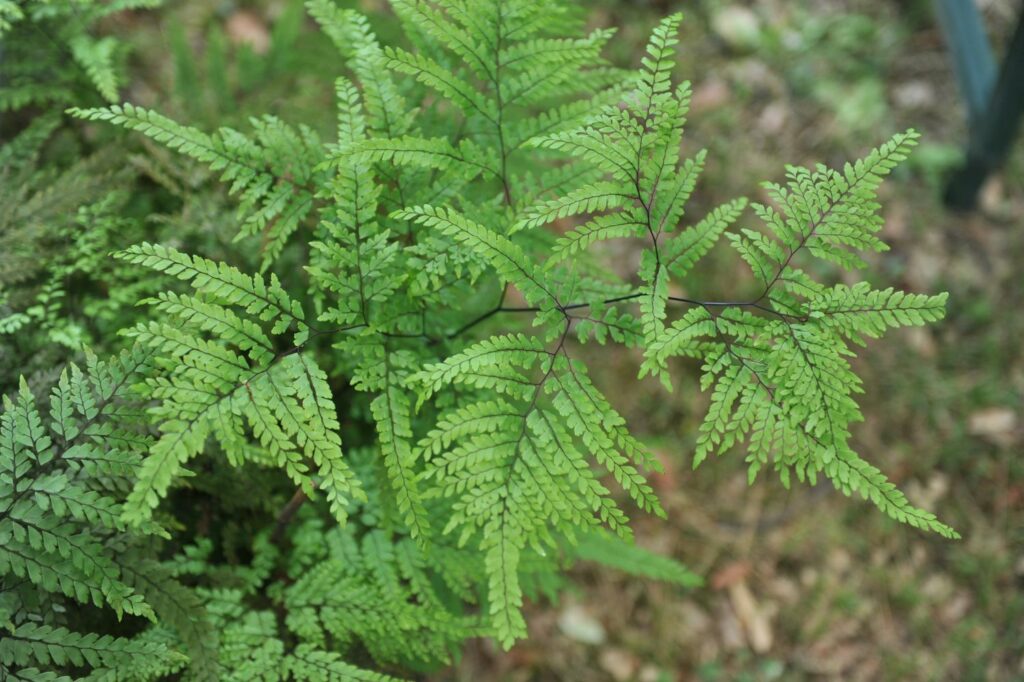
Staghorn fern
The common staghorn fern (Platycerium bifurcatum) has particularly unusual fronds. The green, leathery, fertile fronds branch at the top to look like deer antlers. These leaves are firm and grow upright or overhanging. Staghorn ferns also have so-called basal fronds. The basal fronds grow close to the roots to protect them from drying out, much like a layer of mulch. Over time, they turn brown and die, returning nutrients to the soil. Basal fronds do not have spores and, therefore, cannot be used for propagation.
Staghorn ferns love bright locations in partial shade without direct sunlight. Ideally, temperatures should be kept at about 20 °C all year round. Do not allow the temperature to drop below 16 °C in winter. Orchid soil makes an excellent substrate for this epiphyte. Staghorn ferns can be grown in hanging planters or on a terra base along with bromeliads (Bromeliaceae). Staghorn ferns do not tolerate hot dry air or their leaves getting wet. Keep the area humid by putting bowls of water near your fern. In summer, keep the substrate consistently moist. In winter, the substrate can dry out a little, but not entirely.

Tip: there are also different varieties of staghorn ferns for the home. Platycerium wilhelminae-reginae grows particularly branched and decorative.
Dwarf tree fern
Despite its name, this fern forms an upright trunk up to one metre tall when mature, making the dwarf tree fern (Blechnum gibbum) reminiscent of a palm tree. The metre-long fronds are green and pinnate, and the leaflets are slightly wavy. In winter, dwarf tree ferns like to be kept at around 17 °C. In summer, these indoor ferns prefer temperatures of 20 to 25 °C. The best spot for a dwarf tree fern is partially shaded, and its soil should be loose and slightly acidic. Just mix some all-purpose compost with our Plantura Organic Ericaceous Compost. Our acidic compost is not only great for hydrangeas (Hydrangea spec.), but is also perfect for making substrate mixtures for ferns, many palms and million bells (Calibrachoa).

House holly-fern
The fronds of house holly-ferns (Cyrtomium falcatum), also known as Japanese holly ferns, are pinnate. Their individual leaflets are quite large and have toothed edges. The glossy, dark green leaves are somewhat reminiscent of those of holly (Ilex), hence the name holly fern. The species remains small at around 30cm high. House holly-ferns enjoy cool temperatures of around 18 °C year-round. If placing your fern outside in summer, keep it in a semi-shaded and sheltered spot, and water it regularly. In winter, these ferns can tolerate lows of around 10 °C. Holly ferns are sensitive to too many nutrients. We suggest using an acidic substrate with a pH value between 4 and 6, such as our Plantura Organic Ericaceous Compost. Our certified organic compost has a low peat content and can also be used for many other plants as well.
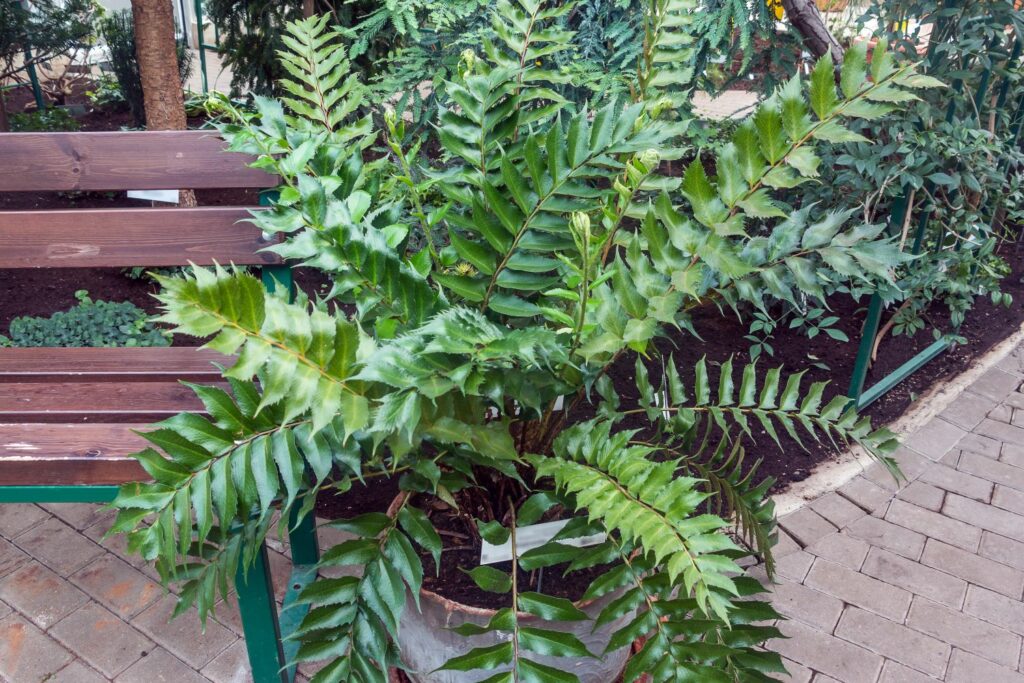
Tip: the small, round or elongated, brown dots on the underside of fern leaves are called sori. This is where the fern produces spores, which are necessary for their reproduction.

Button fern
Button ferns (Pellaea rotundifolia) stand out with their unusual fronds. Their leaflets are small, dark green, shiny and round with a leathery texture. The waxy coating on the leaflets prevents water from evaporating from them and enables these ferns to survive dry spells. The shoots grow in a creeping fashion rather than upright. Button ferns typically shed their leaflets in winter and need to be overwintered in a cool place above 5 °C. In summer, give your button fern a bright spot that is not too sunny with temperatures around 20 °C. These ferns are content with ordinary compost. However, be aware that this xerophytic plant does not tolerate excessive watering. Allow the root ball to mostly dry out before watering again, but never let it dry out completely.

Tip: the Pellaea genus also includes many fern species. Sickle ferns (Pellaea falcata) have elongated leaves and grow larger than their round-leaved relative. Green cliff brake (Pellaeaviridis) is considered particularly resilient and displays decorative, dark red petioles.
Blue star fern
Another popular indoor fern is the blue star fern (Phlebodium aureum). It originates from the tropical and subtropical regions of the Americas. This beautiful indoor fern requires a warm, shady and humid location. The leaves may be simple or pinnate with undulate margins. In summer, keep these ferns somewhere with temperatures of around 20 °C. In winter, blue star ferns prefer a cooler environment. However, do not let the temperature fall below 12 °C. Use a mixture of potting soil and orchid compost or pine bark to plant your blue star fern.
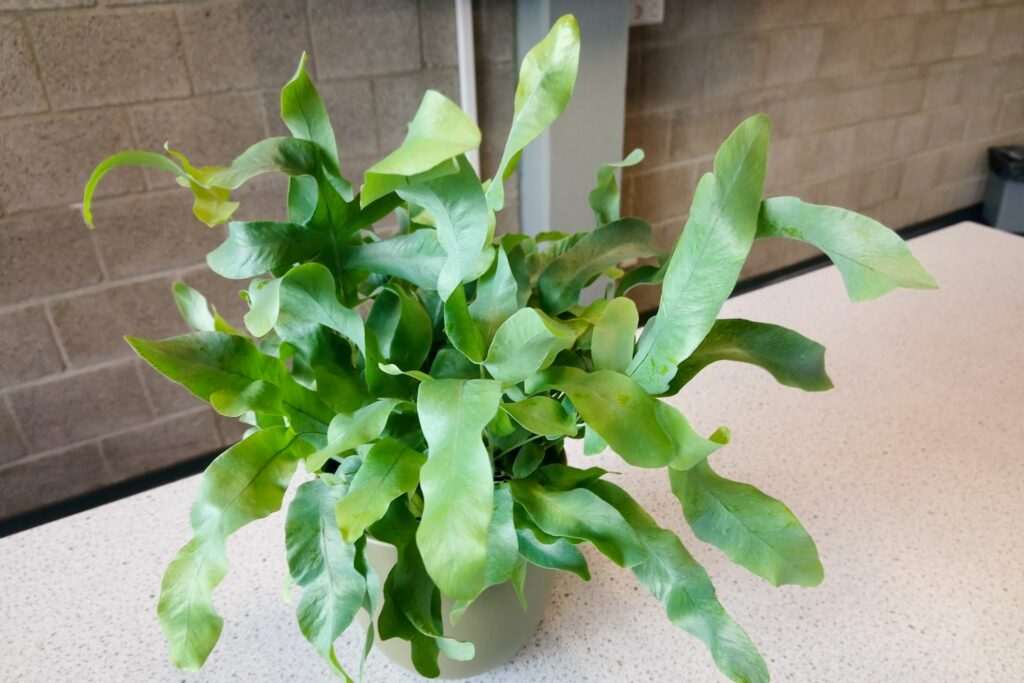
Tip: interesting cultivars of blue star fern include ‘Glaucum’ with wavy leaflets and ‘Raadphle01’ with curly leaflets.
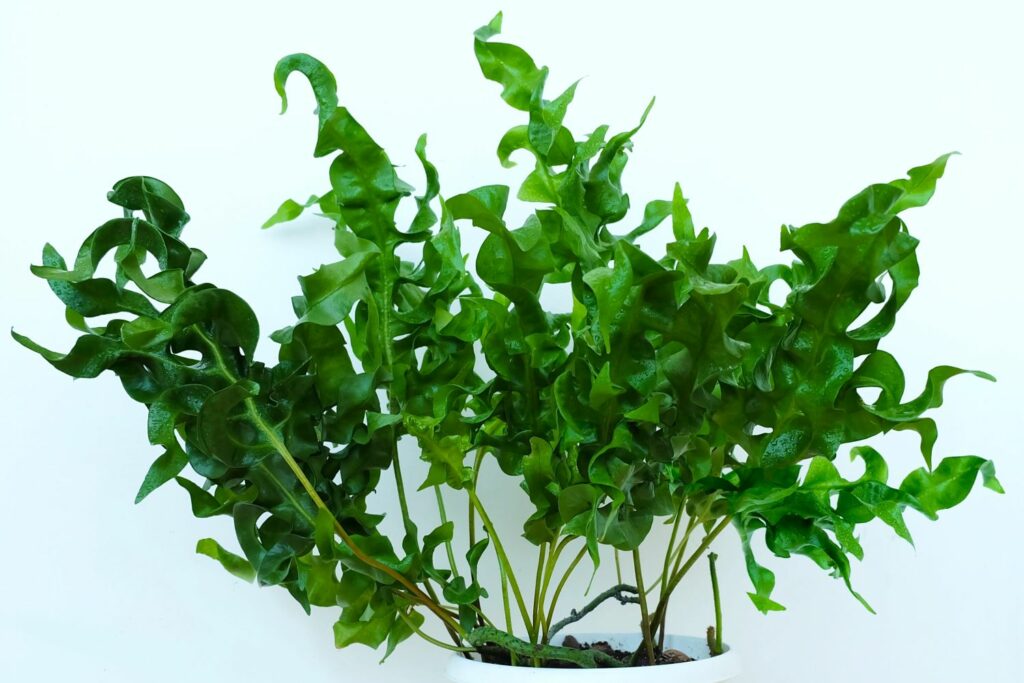
The right location for indoor ferns
In nature, you can find ferns in the undergrowth of forests where there is less sunlight. Accordingly, indoor ferns like a location in partial shade or even full shade. Avoid locations with direct sun for all indoor fern plants.
Most ferns benefit from high humidity, especially those from tropical and subtropical regions. Therefore, bathrooms are great places for keeping indoor ferns. We suggest using a well-drained soil, such as our Plantura Organic All Purpose Compost, for planting your fern. Our soil provides many key nutrients and remains structurally stable for a long time. Before planting, remember to add a drainage layer to the bottom of the pot to prevent waterlogging. When it comes to finding the right location for your fern, always consider the individual requirements of your fern species.
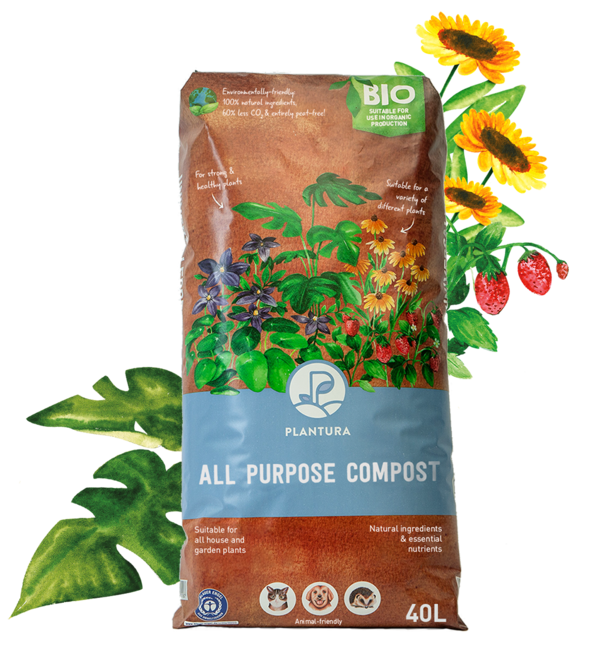
- Perfect for all your house, garden & balcony plants
- For strong & healthy plants as well as an active soil life
- Peat-free & organic soil: CO2-saving composition
Indoor fern care
Regular watering is of utmost importance when caring for potted ferns. Be sure to keep the root ball moist during the growing season. However, avoid waterlogging. Pour off any excess water from the planter after watering. In winter, reduce how much you water, and allow the fern’s soil to dry out a bit. Ferns also like it humid, so mist your ferns with water from time to time to keep them happy.
Fertilise potted ferns every two to four weeks during the growing season. A liquid plant fertiliser, such as our Plantura Liquid Houseplant Food, is a great option. Simply add the liquid fertiliser to the water you use for watering. Ferns do not need fertilising in winter. Also, feel free to remove brown fronds from potted ferns at any time.
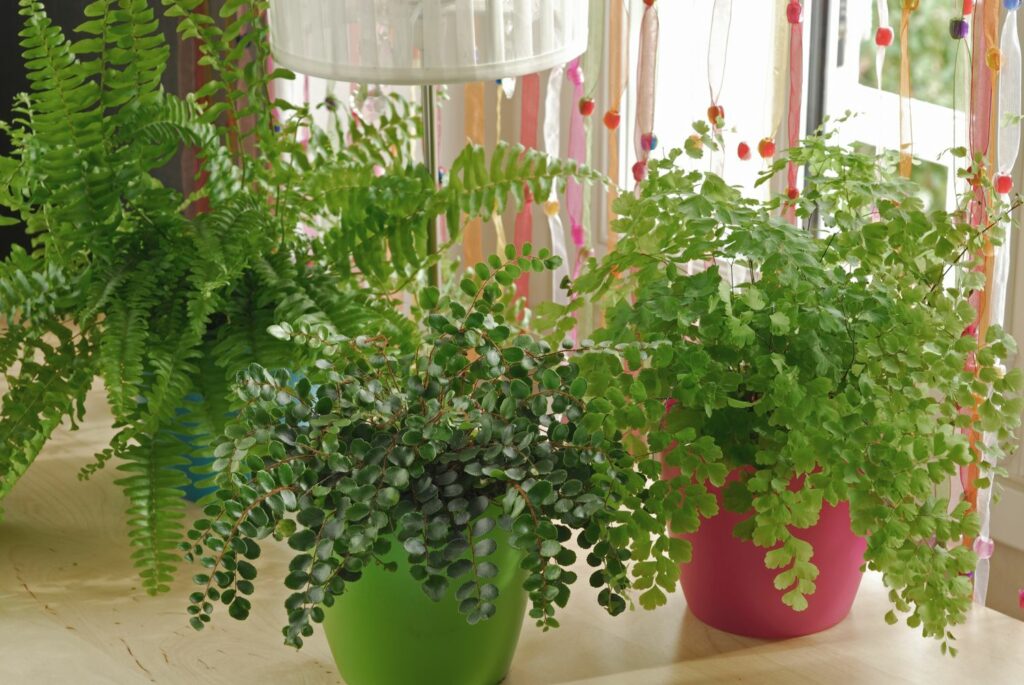
Tip: the most common care mistakes with potted ferns are too much sunlight, too little or too much water, and too much fertiliser. The latter two mistakes can quickly cause root rot, causing the fronds to turn brown. Lack of water and sunburn can also cause fern fronds to turn brown.
Once you have found the right spot for your ferns, they should be very easy to care for. If you are in the market for houseplants that do not require much attention, visit our article listing 10 low-maintenance indoor plants.



















